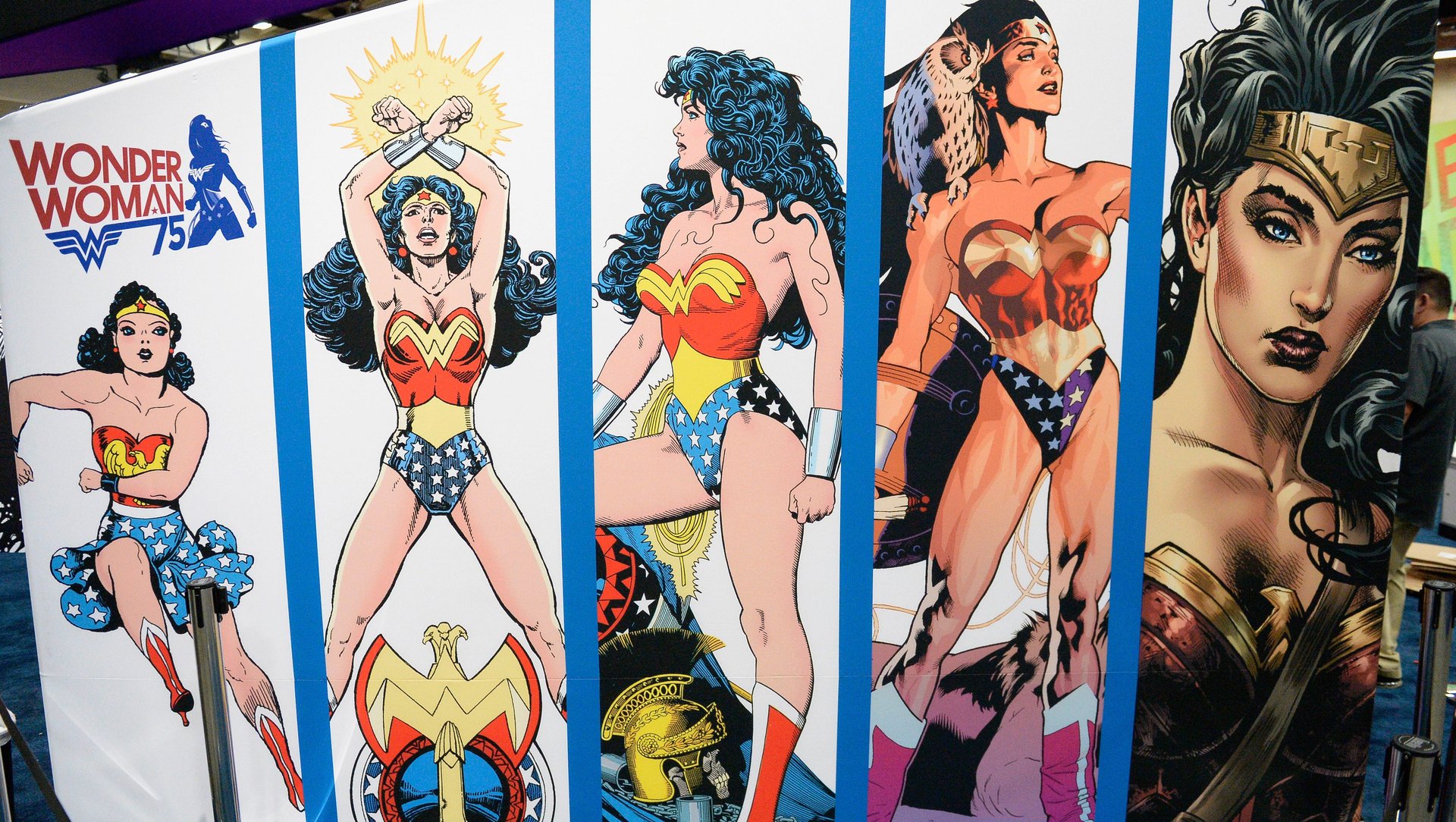Wonder Woman has had it hard enough. Must she now be protested as a UN mascot, too?
These are interesting times for Wonder Woman.


These are interesting times for Wonder Woman.
On the one hand, the character—who turns 75 this year—was the one bright spot in this summer’s otherwise bleak Batman Vs. Superman, and she’ll even headline her own movie next year.
On the other, she’s being blasted for having been named a United Nations “honorary ambassador for the empowerment women and girls,” a designation she was set to receive on Oct. 21. A petition protesting the designation gathered more than 900 signatures from UN staff members who are calling her a particularly bad choice for an organization that claims to value diversity, and stands against the sexual exploitation of women. It describes Wonder Woman as:
A large breasted, white woman of impossible proportions, scantily clad in a shimmery, thigh-baring body suit with an American flag motif and knee high boots –the epitome of a “pin-up” girl.
It’s hard to argue with those objections, along with the broader one of using a fictional character instead of a real woman, which makes it appear that UN is now in the product-placement business. And it probably doesn’t help that in its search for a new secretary general, the UN recently brushed aside several female candidates and instead selected a man, as it has every other time the role has been vacant.
But spare some sympathy for Wonder Woman. She has carried a lot of cultural weight as the only A-list female superhero, despite being poorly equipped for the job.
Wonder Woman was created in 1941 by William Moulston Marston, with the explicit idea of creating a female counterweight to the excessively violent comics being produced for boys. So she was born as a feminist icon—but a 1940s, patriotic version of one, which meant wrapping her in the American flag (a skin-tight version of one, anyway), and having her frequently bound and chained. (Marston, a psychologist, was a fascinating character himself, with some peculiar ideas, and is the subject of Jill Lepore’s 2014 book The Secret History of Wonder Woman.)
As a character, Wonder Woman has other flaws, too. Her origin as an Amazon princess is confusingly clouded with Greek myth, and is not a background most kids can relate to. Her villains lack the panache of the Joker or Lex Luthor; her primary love interest, Steve Trevor, has the personality of a Ken doll; and her sidekick, Etta Candy, an obese figure of fun, has been cringe worthy for most of her history.
And then there’s the costume. While DC Comics has tinkered with it over the years—adding leggings, a cape, and, at one point, giving her a full 1960s mod makeover—she’ll perhaps always be best known for the plunging neckline and star-spangled briefs worn by Lynda Carter in the late 1970s Wonder Woman television series.
Despite all that baggage, Wonder Woman has persevered as an icon—mostly because, for decades, she was the only female superhero of any note. Yes, there were token women on super teams like the Fantastic Four’s Invisible Woman (a name which tells you everything about how the character was written in her first decades) and female analogs of male heroes, like Hawkgirl, She-Hulk and Spider-Woman. But for generations of girls seeking a bona fide star, Wonder Woman was the only option.
Thankfully, that’s changing. Female characters are multiplying in comics and, gradually, in movies. The X-Men introduced fully realized female heroes like Storm and Rogue to the world in the 1980s, and Marvel transformed Carol Danvers, who used to dress in thigh-high boots and a skimpy leotard as Ms. Marvel, into the fully clothed and fully in charge Captain Marvel, due to get her own movie starring Brie Larson in 2019.
It will likely take decades for those newer characters to achieve the global fame of Wonder Woman. So if the UN was going to thrust a world-renown superhero into a starring role, Wonder Woman was the only logical choice. There’s no doubt she’ll survive the criticism, though; she’s endured far worse.